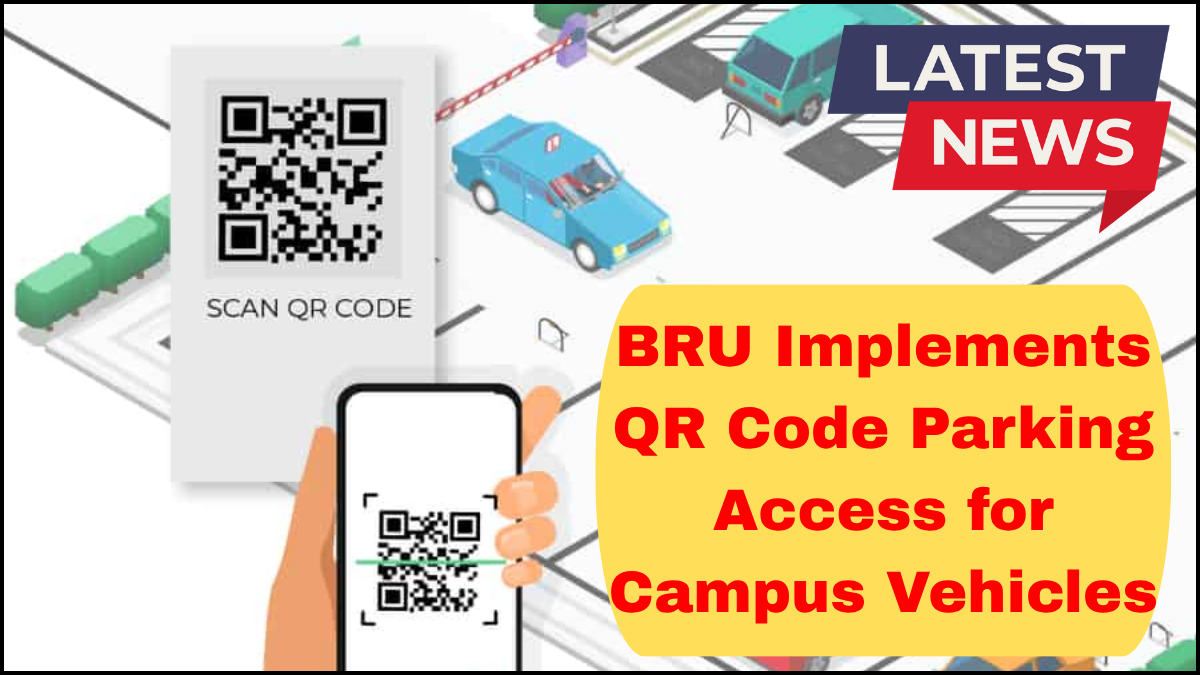In a strategic move to modernize its campus parking pass system, Burapha University (BRU) has launched a QR code-based vehicle access solution. This new system is designed to streamline entry, reduce congestion, and enhance security across all university parking areas. By shifting from traditional sticker-based passes to digital student vehicle access, BRU is aligning its infrastructure with 21st-century campus needs.

The Shift Toward Smart Parking at BRU
The QR code system represents a leap forward in how the university manages on-campus transportation. Prior to this upgrade, students and faculty relied on physical parking permits that often led to delays at entry points, risk of counterfeiting, and administrative bottlenecks. The new QR code model replaces outdated processes with a digital solution that simplifies parking access and increases operational efficiency.
Each registered vehicle receives a unique QR code linked to the university’s central database. This digital code can be displayed either through the student portal on a mobile device or printed and affixed to the windshield. At every campus gate and designated parking zone, scanners read the QR codes, granting or denying access in real-time based on registration status.
Enhancing the Campus Parking Pass System
One of the most significant benefits of this upgrade is the improved management of the campus parking pass system. The university can now maintain a dynamic, accurate record of vehicle registrations, access times, and location-based parking analytics. This not only aids in monitoring but also assists in optimizing space allocation during peak hours.
The centralized system also minimizes the risk of unauthorized entry. QR codes are tied to individual users and their vehicle information, making duplication or misuse nearly impossible. Additionally, expired or unregistered codes are automatically flagged, eliminating the need for manual inspections by security personnel.
Advantages of Digital Student Vehicle Access
The switch to digital student vehicle access offers multiple advantages:
-
Speed and Convenience: Students no longer need to wait for physical permits or stickers. Vehicle access is instantly granted once registration is approved.
-
Eco-Friendly Solution: Eliminating plastic passes and paper documentation supports BRU’s sustainability goals.
-
24/7 System Updates: Parking administrators can update access permissions in real-time, adapting to changes such as temporary passes or revoked permissions.
-
Cost Savings: The digital model reduces the university’s long-term expenditure on materials, printing, and staff labor related to pass distribution.
For students, this transformation translates into a smoother, hassle-free parking experience. Mobile-friendly access also aligns with the digital habits of today’s learners, who expect institutions to keep pace with evolving tech.
Integration With Campus Infrastructure
BRU’s QR code access system doesn’t operate in isolation. It’s integrated with existing campus ID systems, allowing seamless authentication between personal identification, vehicle access, and academic services. This cohesive network enables better data sharing and reporting, further strengthening BRU’s smart campus ambitions.
Future phases of the system may include integration with mobile apps for parking space reservation, real-time updates on available lots, and automated violation tracking. These enhancements will provide a more complete solution for campus parking pass system management and planning.
Ensuring a Smooth Rollout
To ensure adoption across the board, BRU has initiated an awareness campaign to educate students, faculty, and staff on how to register and use their QR codes. Help desks, online tutorials, and training sessions have been made available to assist with the transition. Security staff have also been trained in operating the new scanning equipment and resolving any technical issues that arise.
A Model for Other Institutions
BRU’s forward-thinking approach sets a strong example for other academic institutions looking to upgrade their parking management strategies. The integration of digital student vehicle access not only improves daily operations but also enhances the overall campus experience.
As more universities aim to reduce physical paperwork and adopt intelligent systems, BRU’s initiative marks a clear step toward smarter, safer, and more efficient campus environments.
FAQs
Q1: How do students obtain their QR code for vehicle access?
Students can log into the university’s transportation portal, complete vehicle registration, and download their personalized QR code directly to their device or print it for display.
Q2: What if a student changes vehicles mid-semester?
The QR code can be updated by logging into the portal and modifying the vehicle details. The system will generate a new QR code linked to the new vehicle.
Q3: Can visitors use the QR code system?
Yes, temporary QR codes can be issued to registered visitors upon request through the campus parking administration office.
Q4: What happens if someone tries to use a fake QR code?
Fake or expired QR codes are automatically denied access by the system. Each scan checks for validity in real-time against the central database.
Q5: Is this system compatible with all smartphones?
Yes, the QR codes are designed to work across all modern smartphones. A printed version can also be used if a device isn’t available.
click here to learn more